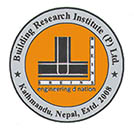
Today (NST)
Friday, Apr 25, 2025
Smart Search
Please post in your Technical Queries, Comments & Suggestions to Contact us......
Advertisement

For Advertisement
|
|
| Subscribe to BREINS Sci-Tech |
| Visit this group |

Concrete Technology
Grading, Surface texture, Shape, Strength and Stiffness of aggregate particles
Grading
Strength of concrete is basically a function of water-cement ratio provided
that concrete is workable. For producing a workable concrete the important
factor is a good “gradation” of aggregates. However it should be understood
that there is no “ideal aggregate grading” because satisfactory concrete
can be made with various aggregate gradings within certain limits.
However, if a sample of aggregate is well graded, it would contain minimum voids; requires minimum cement paste to fill up the voids in the aggregates. Minimum paste will mean less quantity of cement and less quantity of water, which will further mean increased economy, higher strength and greater durability.
Surface Texture & Shape
Generally angular aggregate particles have rough texture and round aggregate
particles are smooth textured. From the bonding point of view it seems
that smooth textured rounded particles form a poor bond with cement
paste. But the smooth looking surface of rounded particles is also rough
enough at the microscopic level and the cement-gel that forms a bond
with aggregate surfaces also has particle sizes in level of microns.
Both, surface and the cement gel reacts at the sub-microscopic level;
hence the theory that smooth surfaced particles yields poor concrete
is not fully justified.
Angular aggregates have higher specific surface area than smooth rounded aggregate. With a greater specific surface area the angular aggregate may show higher bond strength than rounded aggregates. Also, angular aggregates exhibit a better interlocking effect in concrete that contributes in strength of concrete.
Higher specific surface area of angular aggregates with rough texture demands more water for a given workability than rounded aggregates. From this point of view for a given water-cement ratio, rounded aggregates give higher strength. Superimposing all these facts, it can be concluded that:
For water-cement ratio below 0.4 the use of crushed aggregate has resulted in strength up to 38 percent higher than the rounded aggregate. With an increase in water-cement ratio the influence of roughness of surface of the aggregate gets reduced and at a water-cement ratio of 0.65, no difference in strength of concrete made with angular aggregate or rounded aggregate has been observed.
Strength & Stiffness of Aggregate
Usually aggregates used in the concrete have higher value of “Modulus
of Elasticity” than the bonding material cement-paste and concrete itself.
Also, strength of aggregate particles ranges from 80 MPa to 200 MPa;
which is much higher than that of low strength concrete.
(i) Low strength concrete
Aggregates of low strength and low modulus of elasticity can be valuable
for producing the low strength concrete. As the strength and stiffness
of corresponding matrix phase is always lower than aggregate particles,
in low strength concrete, use of aggregate particles of low strength
and stiffness preserves the integrity of concrete. It is to be remembered
that strength of “low strength concrete” is governed by the cracking
of “transition zone” or by the properties of cement-paste itself. In
low strength concrete, as volume changes occurs during loading, compressible
aggregates preserves the integrity of concrete while rigid aggregates
might lead to cracking of the surrounding cement-paste.